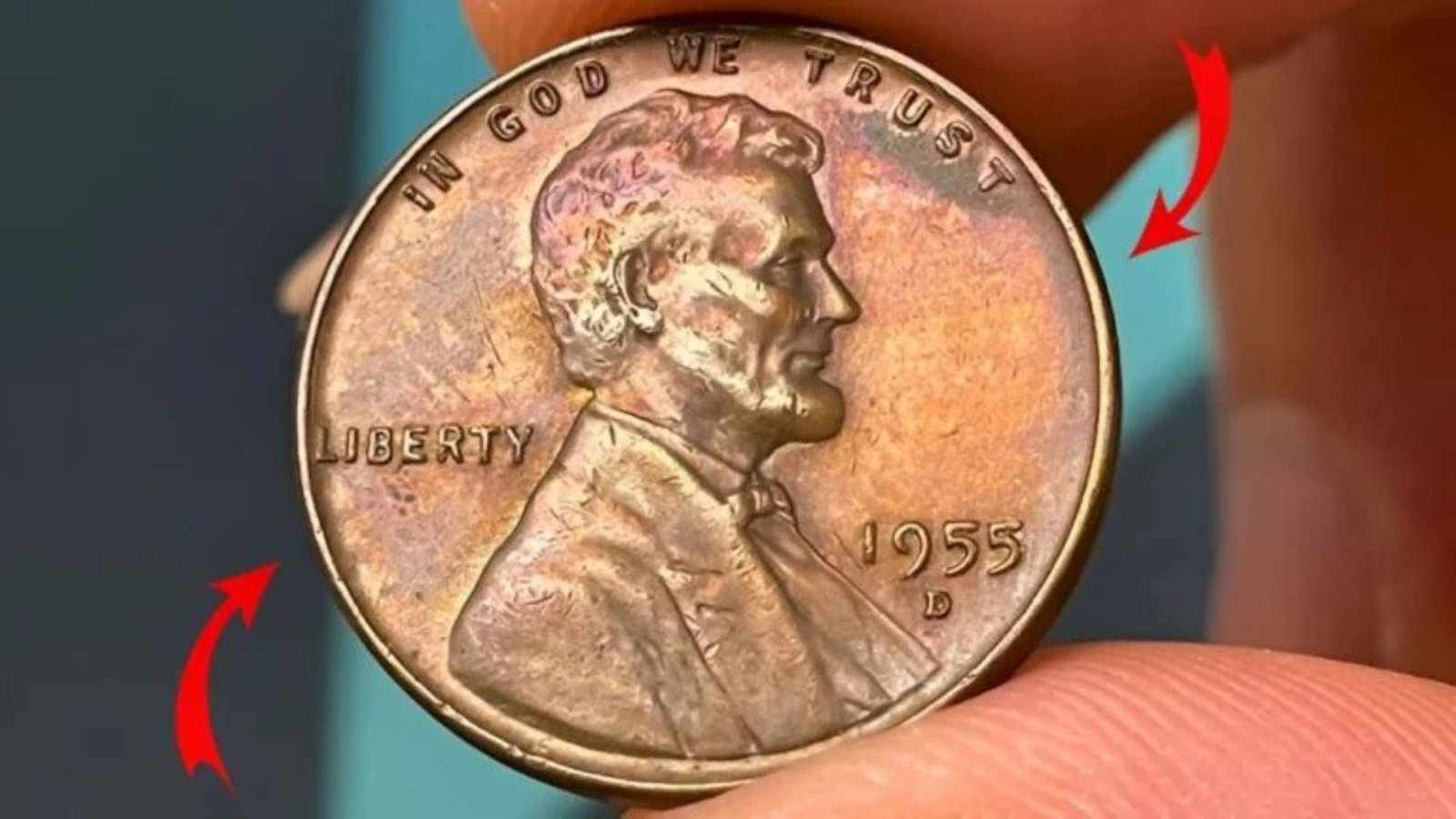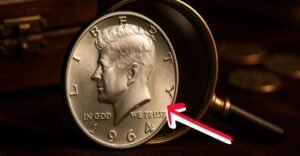Imagine digging through your loose coins after a shopping trip and stumbling upon a tiny treasure that could buy you a mansion, a yacht, or even a private island. Sounds like a movie plot, right? But it’s real – or at least, experts say it’s possible. We’re talking about the legendary Lincoln Wheat Penny, a simple one-cent coin from over a century ago that’s become the holy grail for coin fans.
One super-rare version might fetch a staggering $140 million at auction. And get this: it could still be floating around in everyday money, unnoticed by most folks. Buckle up as we uncover the wild history, the big-money secrets, and simple tips to spot if you’ve got a winner in your wallet. This isn’t just coin talk – it’s a real-life treasure hunt!
The Humble Beginnings of the Lincoln Wheat Penny
A Coin Born from History and Honor
Back in 1909, the U.S. Mint decided to shake things up. They wanted to celebrate the 100th birthday of Abraham Lincoln, the 16th president who led the country through tough times like the Civil War. For the first time ever, an American coin would show a real person’s face – not just a goddess or an eagle. Artist Victor David Brenner stepped up to design it. On the front, you see Lincoln’s serious profile, along with the word “LIBERTY” and the year it was made. Flip it over, and two stalks of wheat frame the words “ONE CENT” – that’s why it’s called the Wheat Penny.
This little coin wasn’t meant to be fancy. It was everyday money, made from cheap bronze (a mix of copper and tin) to keep costs low. Over nearly 50 years, from 1909 to 1958, billions of these Lincoln Wheat Penny coins rolled off the presses at mints in Philadelphia, Denver, and San Francisco. Kids saved them, folks used them for candy, and they jangled in pockets across America. But who knew this ordinary penny would turn into a collector’s dream?
Why It Stuck Around So Long
The design lasted for decades because people loved it. It felt timeless, like Lincoln himself. During the Great Depression and World War II, these pennies kept the economy humming. By 1958, though, the Mint switched to a new back side showing the Lincoln Memorial to mark the 150th anniversary of his birth. Today, you can still find old Wheat Pennies in circulation – tucked in jars, forgotten in attics, or handed out at stores. Most are worth just a cent or two, but a few? They’re worth a fortune.
The Epic Mistake: Meet the 1943 Bronze Lincoln Wheat Penny
War Changes Everything
Fast-forward to 1942. World War II was raging, and the U.S. needed every scrap of metal for bullets, tanks, and planes. Copper, a key part of penny blanks, was in short supply. So, the Mint made a big switch: starting in 1943, they started using steel coated with a thin layer of zinc instead of bronze. These silvery pennies looked weird next to the old copper ones, but they did the job. Over a billion steel Lincoln Wheat Penny coins were made that year – magnetic, shiny, and super common.
But here’s where the magic (or mayhem) happens. A few bronze blanks – the old-style copper pieces – slipped through the cracks at the Denver and San Francisco mints. Workers struck them by mistake, creating the 1943 Bronze Lincoln Wheat Penny. Only about 20 to 30 of these are known to exist today. Each one is like a snapshot of wartime chaos: a tiny error that dodged history’s bullet.
The $140 Million Dream Coin
Now, the juicy part – that eye-popping $140 million price tag. No, it hasn’t sold for that (yet). The record is a cool $1.7 million for one in 2010. But experts whisper that a perfect, untouched example – graded MS-68 or higher by pros – could smash records. Why? Rarity meets perfection. Imagine a coin that’s never been spent, with zero scratches, full shine, and every detail crisp as the day it was born. Collectors would go wild. Some say it might still be out there, mixed in with junk change, waiting for a sharp-eyed finder.
What Makes a Lincoln Wheat Penny So Priceless? Breaking Down the Factors
Not every Wheat Penny is a jackpot, but the rare ones? They’re gold mines. Let’s look at what drives the value sky-high. It’s a mix of luck, history, and a dash of detective work.
Key Elements That Boost Value
- Rarity of the Error: Most errors are one-in-a-million flukes, like the 1943 bronze strike.
- Mint Mark Magic: Look for “D” (Denver) or “S” (San Francisco) under the date – fewer were made there.
- Condition is King: Coins graded “uncirculated” (never spent) can be 100 times more valuable than worn ones.
- Historical Hook: Ties to big events like WWII make them storytelling stars.
- Buyer Frenzy: Rich collectors pay top dollar to own a piece of the puzzle.
To make it crystal clear, here’s a handy table comparing common vs. rare Lincoln Wheat Penny traits:
| Factor | Common Wheat Penny | Rare 1943 Bronze Version |
|---|---|---|
| Material | Bronze (1909-1942), Steel (1943-1944) | Accidental Bronze in 1943 |
| Known Examples | Billions produced | Only 20-30 confirmed |
| Average Value | 1-5 cents | $100,000 to $1.7 million (sold examples) |
| Top Potential | Up to $50 for nice ones | Speculated $140 million for perfect grade |
| How to Spot | Looks normal, magnetic if steel | Non-magnetic, copper color in steel year |
| Historical Tie | Everyday use | WWII metal-saving blunder |
This table shows why one slip-up turned pocket change into platinum. And remember, values fluctuate – check sites like PCGS CoinFacts for the latest.
Your Step-by-Step Guide: How to Hunt for a Valuable Lincoln Wheat Penny
Feeling the itch to play detective? Don’t worry – you don’t need a metal detector or fancy gear. Just some patience and a magnifying glass. Here’s a simple bullet-point plan to check your coins:
- Grab Your Coins: Start with any old jars, piggy banks, or recent change. Focus on pennies dated 1909-1958.
- Eye the Date First: Zero in on 1943 (should be steel) or 1944 (should be steel too – another error year for bronze).
- Magnet Trick: Grab a fridge magnet. If the 1943 penny sticks, it’s the common steel one. No stick? You might have bronze – jackpot alert!
- Check for Marks: Tiny letters under the date? “D” or “S” means rarer mint. No mark? Philadelphia, more common.
- Inspect the Wear: Shiny and untouched? Better odds. Scratched or dull? Probably not a big hitter.
- Weigh It: Bronze ones tip the scales at 3.11 grams; steel at 2.7 grams. Use a kitchen scale.
- Call in the Pros: If it looks promising, snap photos and contact NGC or PCGS for grading. It costs a bit but could pay off huge.
Pro tip: Avoid cleaning your coin – it can hurt the value. Let experts handle it. And if you’re new to this, join online forums like CoinTalk for free advice from pros.
Real-Life Tales: Stories of Lincoln Wheat Penny Discoveries That Inspire
What makes this hunt exciting? The real stories from everyday people. Take Don Lutes Jr., a teen in 1947 who got a 1943 bronze penny as lunch money. He held onto it for decades, and when he sold it in 2010, it fetched $1.7 million! Or the grandma who found one in an old cookie jar and turned it into college funds for her grandkids.
Then there’s the 1909-S VDB penny – another Wheat star with the designer’s initials. One sold for over $168,000 in 2018. These tales remind us: fortunes hide in plain sight. Even if you don’t hit the $140 million dream, selling a mid-tier rare could net you thousands. It’s like the lottery, but with history.
Other Must-Know Rare Wheat Pennies
Don’t stop at 1943. Here’s a quick list of other heavy-hitters:
- 1909-S VDB: First year with designer’s mark – up to $200,000.
- 1914-D: Low mintage, often $150,000+ in top shape.
- 1922 Plain: Missing mint mark due to a die error – $10,000 to $50,000.
- 1955 Doubled Die: Looks doubled on letters – $1,000 to $20,000.
Hunt these too, and your change jar might surprise you.
Wrapping It Up: Why the Lincoln Wheat Penny Still Captivates Us
From a birthday tribute to a wartime whoopsie, the Lincoln Wheat Penny has more drama than a blockbuster film. That speculated $140 million prize? It’s the ultimate carrot, dangling hope to dreamers everywhere. Sure, odds are slim – like finding a needle in a haystack of billions. But that’s the thrill. Next time you pay for coffee, pause and peek at that copper disc. It might just be more than a cent – it could be your golden ticket.
So, dust off those coin rolls and start searching. Who knows? Your story could be next. Happy hunting, and may Lady Luck smile on your pennies!
Quick FAQs on the Lincoln Wheat Penny
- What’s the biggest sale ever? A 1943 bronze went for $1.7 million in 2010, but perfect ones could top $140 million.
- How do I know if mine’s real? Magnet test plus pro grading – don’t guess!
- Are they still made? No, production ended in 1958, but they’re everywhere in old money.
- Where to learn more? Check PCGS, NGC, or books like “A Guide Book of Lincoln Cents.”




